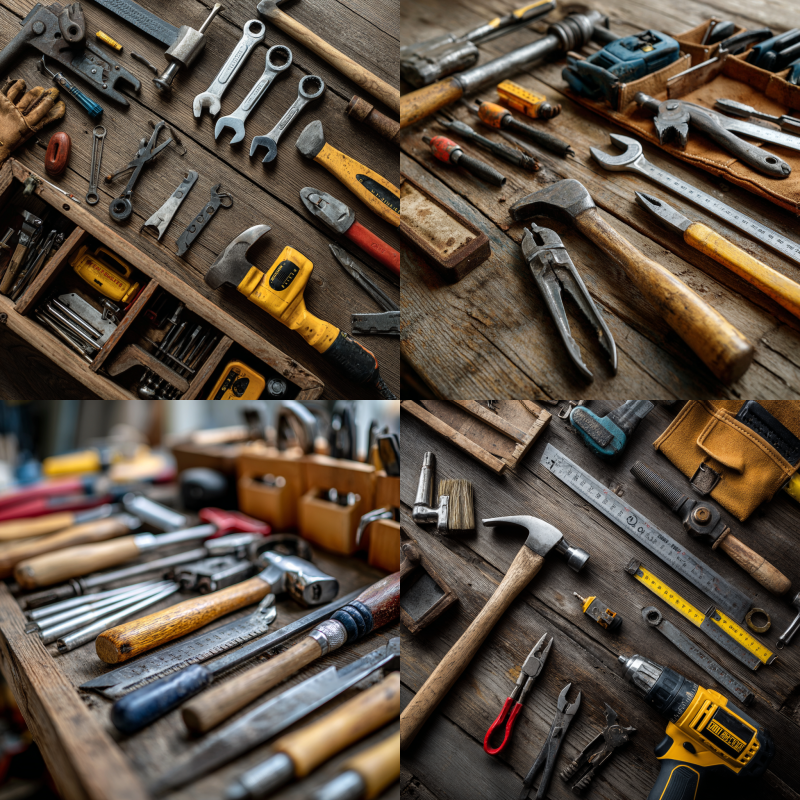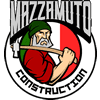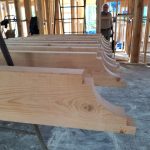
What Tools Do Professional Remodelers Use to Get the Job Done?
What Tools Do Professional Remodelers Use for Safe, Accurate Remodeling?
If you’re planning a home remodel, you might wonder what tools do professional remodelers use to achieve stunning results. According to Mazzamuto Construction, a well-respected contractor with over 60 years of experience (Mazzamuto Construction), each task requires specialized equipment. Professional remodelers rely on tried-and-true hand tools, powerful electric equipment, and advanced specialty gear ensuring precision, efficiency, and safety on every project.
Explore: what tools do professional remodelers use
Professional remodelers handle many types of projects. You’ll see them tackling everything from home additions and kitchen renovation to bathroom remodeling. Because each remodeling job has its own set of challenges like fitting custom cabinets or replacing a roof they keep a wide range of tools on hand. Here are some core tool categories they use:
- Hand Tools: Hammers, screwdrivers, tape measures, and levels.
- Power Tools: Drills, circular saws, and nail guns.
- Advanced Equipment: Wet saws, tile cutters, and laser levels.
- Safety Gear: Hard hats, protective eyewear, and dust masks.
By combining this tool assortment with their technical expertise, remodelers can transform outdated rooms into vibrant, functional spaces. Let’s explore each category to see how these tools fit into everyday remodeling tasks.
Gather essential hand tools
Hand tools may seem humble, but a solid job often starts with these classic items. Tape measures, hammers, and screwdrivers lay the groundwork for accurate measurements, precise cuts, and secure fastening. Good news: these basics are not just for pros. You might already have a few of them in your own toolbox.
Hammer and Nail Set
A hammer drives nails and sometimes anchors or pins. Remodelers often use a nail set with a slightly rounded tip to finish nails neatly, leaving smooth surfaces ready for painting or staining.
Screwdriver Kit
Flat-head and Phillips screwdrivers are essential for installing cabinet hinges, drawer handles, and light switch covers. They’re also handy for disassembling old fixtures during demolition.
Tape Measure
Accuracy counts in remodeling. Measuring your walls, windows, and appliances precisely can save you from costly rework. You’ll often see remodelers double-check measurements before making irreversible cuts.
Level
To get perfectly even shelves or counters, remodelers rely on levels. This rectangular tool has a small bubble vial inside. When the bubble rests between two lines, you know the surface is level.
Together, these tools handle the core of daily remodeling tasks from marking out where your new cabinets will go to ensuring every tile line in your bathroom is perfectly straight. If you’ve ever tried hanging a gallery wall, you know how important a good level can be.
Invest in reliable power tools
Hand tools might be the foundation, but power tools speed up demolition and construction tasks. Professional remodelers use robust drills for virtually every job, from assembling cabinet frames to installing new doorknobs. Here are a few must-have power tools most remodelers keep in their van or workshop:
Power Drill and Driver
A cordless drill is indispensable when attaching drywall, installing flooring, or mounting shelves. Besides speed, a drill’s torque settings help ensure screws don’t strip the material.
Circular Saw
Ideal for cutting lumber, plywood, and even tile (with the right blade). Remodelers lean on circular saws for everything from framing a new wall to slicing through old floorboards.
Jigsaw or Reciprocating Saw
Curved cuts or tight spaces demand a jigsaw or reciprocating saw. They’re frequently used for custom trim work or cutting openings in cabinetry for plumbing.
Nail Gun
Instead of swinging a hammer ten times a minute, a nail gun fires nails instantly. Furniture assembly, deck building, and hardwood floor installation often go faster with a pneumatic or battery-powered nail gun.
You might be relieved to know that you don’t need to buy all these tools yourself. When you hire a professional remodeler, they bring their power tools and the know-how to use them safely. That’s important, given these high-speed devices require both training and careful handling. A slip of the blade can damage wood or worse, cause injury so experienced contractors follow strict safety protocols to protect both themselves and your home.
Master advanced specialty equipment
Not all remodeling scenarios are straightforward. Tasks like laying tile, cutting precise angles, or measuring moisture levels in walls require specialized tools that go beyond the basic gear. Many of these advanced tools have been refined over decades of construction work, letting remodelers create a flawless result.
Wet Saw and Tile Cutter
Bathrooms and kitchens often feature tiled floors or backsplashes. A wet saw has a water-cooling system that keeps the tile from cracking under intense friction. Professional remodelers use these to achieve clean, straight lines in materials like ceramic or porcelain.
Laser Level
While bubble levels do the job for smaller tasks, laser levels project a perfectly straight line across an entire surface. This tool is crucial for aligning cabinets or mapping out pictures on a wall. In large-scale renovations, a laser level can ensure consistency over longer spans.
Moisture Meter
Wood floors, drywall, and other materials can be compromised by hidden moisture. Remodelers often use moisture meters to measure water content before installing or sealing surfaces. This step can prevent warping or mold down the road.
Grout Float and Specialized Plumbing Tools
If you’ve ever replaced a leaky faucet, you might know how tricky plumbing can get. Professional remodelers use pipe cutters, wrenches, and grout floats to tackle everything from fixture installation to sealing tile seams. This specialized gear ensures a solid finish minus the dreaded leaks.
These advanced tools minimize guesswork and let contractors hit a high standard of craftsmanship. For instance, Mazzamuto Construction experts have used laser levels to align custom flooring in historic Martinez homes, ensuring every plank meets seamlessly (Mazzamuto Construction).
Stay safe with proper gear
Remodeling work is exciting, but it also comes with risks like flying debris, slippery surfaces, and power tools that spin at thousands of revolutions per minute. This is where safety gear becomes essential:
- Hard Hats: Protect you from overhead hazards, such as falling objects in new construction or roofing jobs.
- Safety Glasses or Goggles: Shield your eyes when sawing wood or demolishing tile.
- Gloves: Improve your grip and protect against cuts or splinters.
- Dust Mask or Respirator: Prevent you from inhaling fine drywall dust, paint fumes, or other airborne particles.
Professional remodelers typically establish clear safety protocols. They’ll section off work areas with plastic sheeting to contain dust and keep children or pets away. This attention to safety helps keep your home cleaner and quieter during the remodel, so you can live life with minimal disruption.
what tools do professional remodelers use
By now, you’ve seen that professional remodelers come equipped with a full toolkit—from simple hand tools like hammers and levels to advanced gear like wet saws and laser levels. What tools do professional remodelers use varies by project scope, but the best bring years of experience, creativity, and detail-focused expertise. When partnering with seasoned teams like Mazzamuto Construction, you gain both proper equipment and valuable design advice for successful renovations.
Ready to Plan Your Remodel with Confidence?
Mazzamuto Construction has delivered trusted, high-quality renovations for over 60 years. Know exactly how much a professional remodeler costs with no guesswork. Schedule Your Consultation Today!
Frequently Asked Questions
1. What are the best remodeling tools for DIY projects?
The best remodeling tools for DIY projects usually include basics like a cordless drill-driver, circular saw, tape measure, level, and safety gear. These essential remodeling tools make small renovations easier while giving you professional-quality results without overspending.
2. What tools do professional remodelers use?
Professional remodelers use advanced remodeling tools such as miter saws, impact drivers, laser levels, and specialized gear for precision work. These remodeling tools help ensure structural accuracy, speed, and high-quality finishes.
3. How to choose the right remodeling tools?
To choose the right remodeling tools, start by considering your project’s size and complexity. For simple tasks, basic remodeling tools like drills, sanders, and tape measures are enough, while larger projects may require power saws, impact drivers, and design software. Always prioritize durable, high-quality remodeling tools that can be reused for future projects.
4. Why do some tools seem so expensive?
Power tools and advanced equipment are built to handle tough materials and constant use. Premium-quality tools offer better performance and longevity, which is vital for professionals who rely on them daily.
5. Do I need to buy my own safety gear as a homeowner?
It’s always smart to have a basic set of goggles and gloves available, especially if you’ll be on-site. However, your hired contractor typically brings professional-grade safety and protective equipment.
6. Are hand tools still relevant in a world of high-tech power equipment?
Absolutely. Even with power tools at the ready, hand tools provide finesse and control for detail work, ensuring every inch of your home looks sharp.
7. What if my remodeler uses outdated tools?
Tools themselves might not signal a problem if the remodeler has the right technique. Still, current, well-maintained equipment usually delivers more precise and efficient results. Feel free to ask about tool quality during your hiring process.
Review key takeaways
- Professional remodelers use a balanced mix of hand tools, power tools, and specialty gear.
- Accuracy begins with simple items like measuring tapes and levels.
- Power tools accelerate bigger tasks, but they require skill and safety protocols.
- Advanced equipment such as laser levels and wet saws ensures a polished, custom finish.
- Safety gear protects both you and the crew, emphasizing a smooth overall experience.




